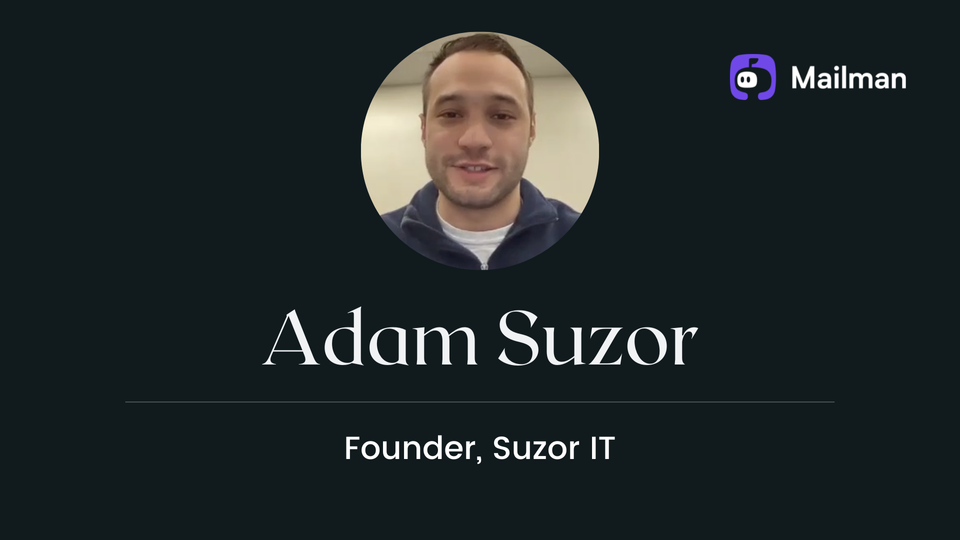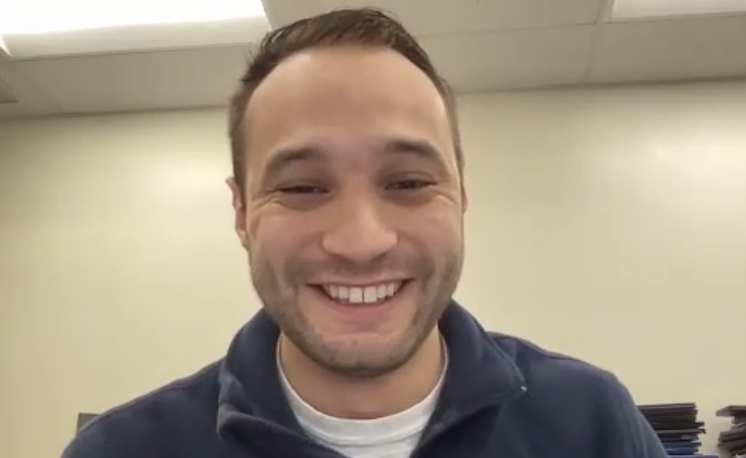Productive team meetings by way of controversy

Meetings are highly unproductive. Most meetings just go on for an eternity without anything coming out of them. Half the people speak, the other half sit and listen.
Some speak with authority, while others shrink.
Some are too loud, some too vulnerable to even voice their opinion.
How do we have productive meetings then?
Is that even a possibility? Or just a utopian dream?
I had almost given up on the idea of productive meetings when I heard this unconventional meeting hack from Adam Suzor –
“CONTROVERSY”
Yeah, controversy!

Whenever Adam wants to have an important meeting with his team, he just throws in some controversial topic to start with. Say, for example, the Robinhood issue. Everyone has strong opinions on that. It will most likely get everyone in the room fired up.
Adam believes this "fired up" mode pushes everyone to speak up. Their minds start running faster, and they have a lesser fear of judgment on their opinions.
Once everyone is heated up, Boom! Adam throws in the actual topic of discussion. From there, it moves a lot quicker than a regular meeting. As everyone is in that mental space and ready to speak whatever's going on in their heads. This also calls for a bit of management, though, else everyone will start talking over each other, and it will turn into a mess.
But in the end, we often have a good handful of different perspectives based on which we derive a conclusion. The contributions are almost equal from all members in the meeting.
This is how an ideal meeting should be – quick, fired up, and output orientated!
By the way, this is not the only exciting productivity hack that Adam shared with me. Another is how he removes unnecessary complexity from everything he does. It might sound straightforward, but there's a story and a science to it.
Let's hear from the man himself!
If you like this episode, please take a minute to share it around. Click here to get an auto-populated tweet.
Adam introduces himself
I’m Adam Suzor, founder of Suzor IT. We provide simple IT solutions to K-12 schools and municipalities. I started Suzor IT because back when I was in school, I saw that the technology in the hands of kids wasn’t up to the mark. The kids deserved better. That’s where my journey began.
With Suzor IT, our mission is to provide super simple technology solutions that can impact K-12 students and municipalities. We’re like a full-service tech department for the schools we work with. This significantly brings a lot of value for smaller schools that otherwise would not have the funding to hire a “Tech Director” or a “Tech Engineer.”
Similarly, on the municipal side, we work with Public Safety departments, towns and they would again find it hard to hire a full-time tech person.
We can give them that kind of service at a price point they can afford.
How he got into entrepreneurship
I was never a good student. The school was never my thing. I did just two weeks of college, and it just wasn’t for me. Entrepreneurship has always been my passion, and technology is the vehicle I use to drive my passion. I don’t think there’s any other vehicle that can enable me to impact so many people at scale.
I started as a “Regional IT Director,” which is like being an employee for a town, and things moved very slowly. As an entrepreneur, I liked things moving quickly. So I did that for a year and a half, then I left to start my own business. It’s been going well for the past 3-4 years; we work with 4-5 schools, a handful of municipalities, and small businesses.
On side hustles and selling 50 water bottles every day in school
I’ve always had a side-hustle. Even in high school, I used to sell water bottles in my backpack.
So the story goes, everyone always wanted water, and the service in school wasn’t that great. I would go to Walmart, grab a 25 bottle pack of spring water. It cost me 22 cents per bottle, and I sold them for a buck. I think I was undercutting the cafeteria by 25 cents. I’d have my friends carry them in alongside me because the bottles were heavy.
I was selling 50 water bottles a day until I got in trouble!
Finding simple solutions to complex problems
I think people over complicate things. Let’s take Wi-Fi, for example.
As soon as you get into a building, it’s a big task to get on the guest WiFi. There’s a long, mostly unnecessary process for that. Especially in schools, they tell you to go to that office and get that unique password.
The schools we serve don’t have any such complexity. Just connect, and it works! We took this complex problem and simplified it by eliminating the password step. We’ve been doing this in schools for around three years, and we haven’t run into any issues.
If you want to simplify complexity, take a very close look at every step of it and see its importance. What would go wrong if we remove some steps? Is it worth the trade-off, if there’s any? Asking these questions can significantly simplify a seemingly complex problem.
Even Mailman uses the same principle of simplicity, you’re on my VIP list, or you’re not!
This holds true not just in technology but in life as well. Leave out what’s not essential, and it’ll leave you with a simple and happy life.
Daily routine
My day has always had a rhythm, but recently I’ve thought about it a bit more.
Talking about my sleep routine, I wake up between 6-9 am. I don't set the alarm. I wake up when I wake up; no complex rules there.
I try to go to sleep somewhere between 9 and midnight.
My workday is driven by the whiteboard, where I list down the problems for the day. I first focus on the highest priority, then work on the next if I finish the 1st one, and I try to review that list every day and re-prioritize based on what the biggest problem is at the moment.
In a day, I focus on the top 3 priorities, the rest usually get delegated, or the problem goes away on its own.
How to prioritize?
I think it’s a skill for entrepreneurs to know how to prioritize. It’s more instinctual. You just know what’s the most important thing you should be working on. You just have to put that in a list on paper. That will help you direct focus on the right things throughout the day.
Another thing that helps is, stepping away from the chaos. For an hour, step away from your in-the-moment worries and think about the big picture. You’ll find many things you worry about are not that important in the big picture. This helps gain a better perspective on where you should be allocating your time and energy more.
On resisting burnout
Whenever I feel I’m getting close to burnout, I just step away, go hiking or do something fun.
It’s crucial to take care of your mental health, especially for entrepreneurs.
Biggest time management mistake
At the time when I started my tech company, I also took over a gym. It was fun, but that brought in a lot of noise. It was hard to focus on my tech business with the gym. Eventually, I sold it off to the YMCA for good.
But I don’t regret that mistake a lot, and it was a good experience for sure!
Staying productive
Black coffee, no sugar, no cream is what I run on.
I hired a fitness trainer. Since my focus is on the business, and their focus is on keeping me moving. It’s easier that way as I do my job and the trainer does his.
I get my exercise midday. It keeps my energy levels up for the rest of the day.
All these things help me stay productive throughout the day.
On productive team meetings
Whenever I want to have an important meeting where I want unbiased opinions from everyone, I just bring up something controversial. Like that Robinhood issue.
It gets everyone to speak as everyone has an opinion on controversial issues.
Once everyone is involved and speaking, I throw in the actual topic of discussion.
The meetings are quicker this way. More people participate who’d otherwise stay silent and not say a word in a meeting. That’s how we collect different perspectives from everyone and arrive at a conclusion at the end based on the points discussed.
It is my unique way of conducting productive meetings where everyone’s involved.
One additional hour in your day
If I had one extra hour a day, I’d spend it talking to people. I love talking to people. A lot of magic comes from communicating with different people. Many problems can be solved just by talking. It is beneficial in everything.
In that 1 hour, I'd talk to some of my customers and understand the problems they’re facing.
If you like this episode, please take a minute to share it around. Click here to get an auto-populated tweet.
Adam fires back at me
"How did you start Mailman?" he asks me.
My answer – I love building stuff. I used a script to protect my attention and focus on finding the next product idea I should build. Not realizing the script I was using to protect my attention was itself the product idea I was looking for. I then got connected to Andrew and discussed it with him. Fast forward, now that script is a complete product helping many people around the globe keep away the distractions from email and focus on the work. That’s the story of how Mailman got started.
Adam says, “that's awesome! You can definitely tell Mailman was written by a busy person. I mean, just by the way, it's set up – those delivery slots and VIP lists. For me, especially in 2020, when I was getting many sales emails, it helped me protect my attention.
I've been recommending Mailman to superintendents and founders because they're busy people, and they're also the contact point for so many things. So it's essential to clear the clutter and still not miss out on what's important. Mailman helps do that.”





